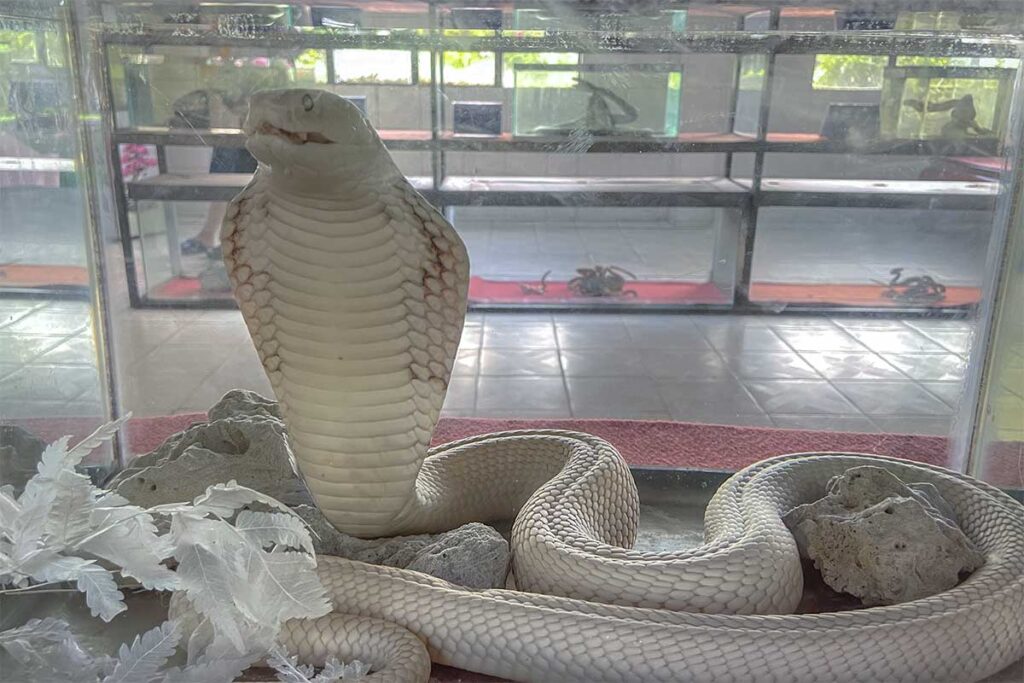What is Dong Tam Snake Farm?
Quick overview & purpose
Dong Tam Snake Farm, located just outside My Tho in Tien Giang Province, is a military-run facility officially known as the Centre for Rearing, Researching, and Processing Medicinal Materials under Military Zone 9. Its main purpose is medical: breeding snakes, producing anti-venom, and running a small on-site hospital that treats hundreds of snakebite cases each year. Alongside this role, the farm has been opened to the public as a so-called “snake museum,” with live animal enclosures and preserved specimens.

Brief history & operations
The farm was founded in the late 1970s, a time when snakebite treatment in the Mekong Delta was limited and anti-venom production was urgently needed. Over the decades, staff developed breeding programs for cobras and king cobras, and the hospital became known as a regional treatment center. From the 1990s onward, the site was also promoted as a tourist attraction, with display enclosures and a museum of preserved reptiles. Weekend venom-extraction demonstrations were later added as an educational show, though these are not always held consistently.
Public access and enclosures
Although Dong Tam Snake Farm was established primarily for research and anti-venom production, part of the grounds is open to visitors. The facility presents itself as a kind of outdoor zoo or “snake museum,” with areas for venomous and non-venomous snakes, a python house, and a museum of preserved specimens. Over time, other animals have been placed here as well—such as crocodiles, bears, monkeys, and birds—so the experience extends beyond snakes, even if this was not the original focus of the facility.
Why it’s better to skip Dong Tam Snake Farm (the honest take)
The anti-venom work carried out at Dong Tam is important, but visitors rarely see that side of the facility. What they encounter instead are outdated enclosures and questionable animal welfare.
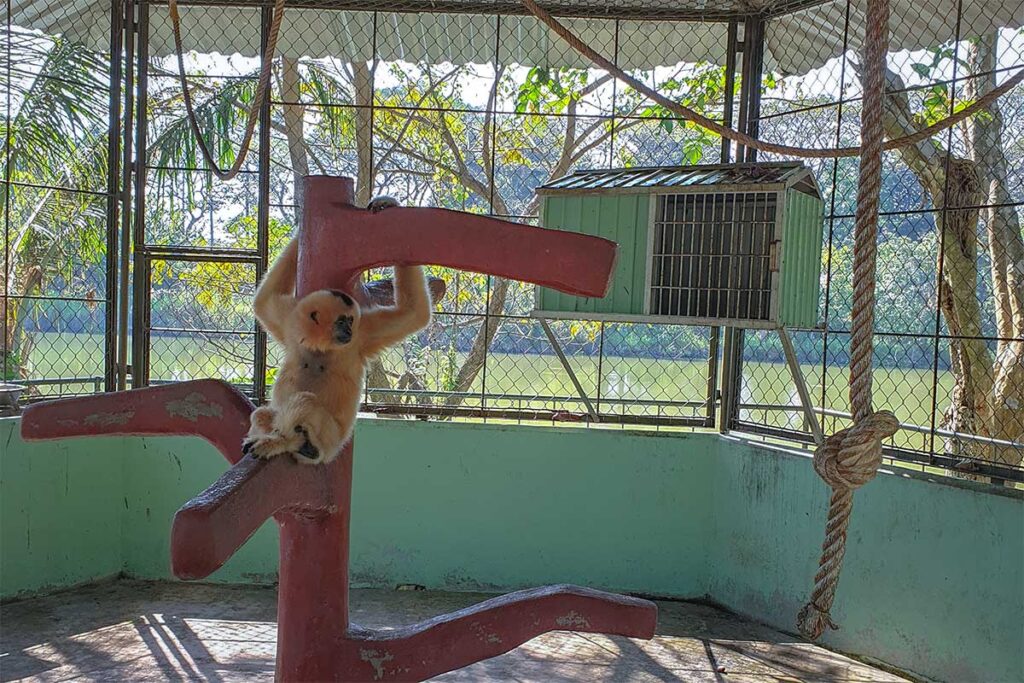
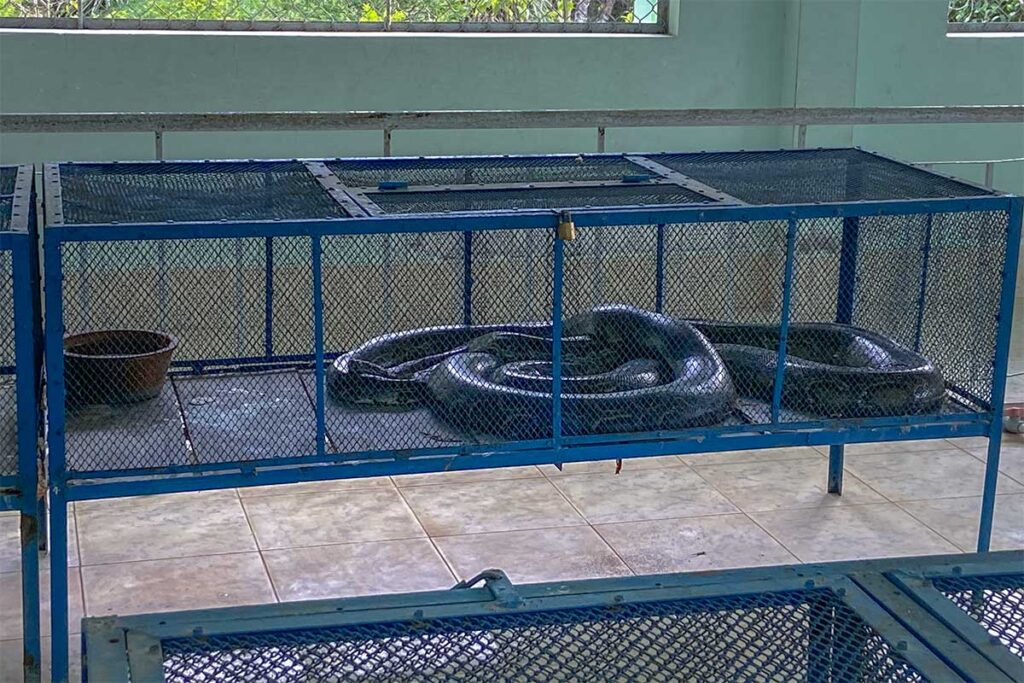
Snakes are often kept in cramped concrete or mesh cages, and a range of other animals—such as monkeys, bears, and crocodiles—are housed in conditions that most foreign travelers find distressing. Rather than an educational look at conservation, the experience often feels closer to an old-style zoo, and for many visitors it becomes one of the most uncomfortable stops in the Mekong Delta.
Pro tip: Check your Mekong Delta day tour
Many international-oriented Mekong Delta tours now leave Dong Tam Snake Farm off their itineraries, but some local agencies still include it. If you prefer to avoid the visit, make sure to check the detailed program before booking and ask directly to exclude “Dong Tam Snake Farm” from the route.
What you will see on site
1. Outdoor snake pits & semi-natural pens
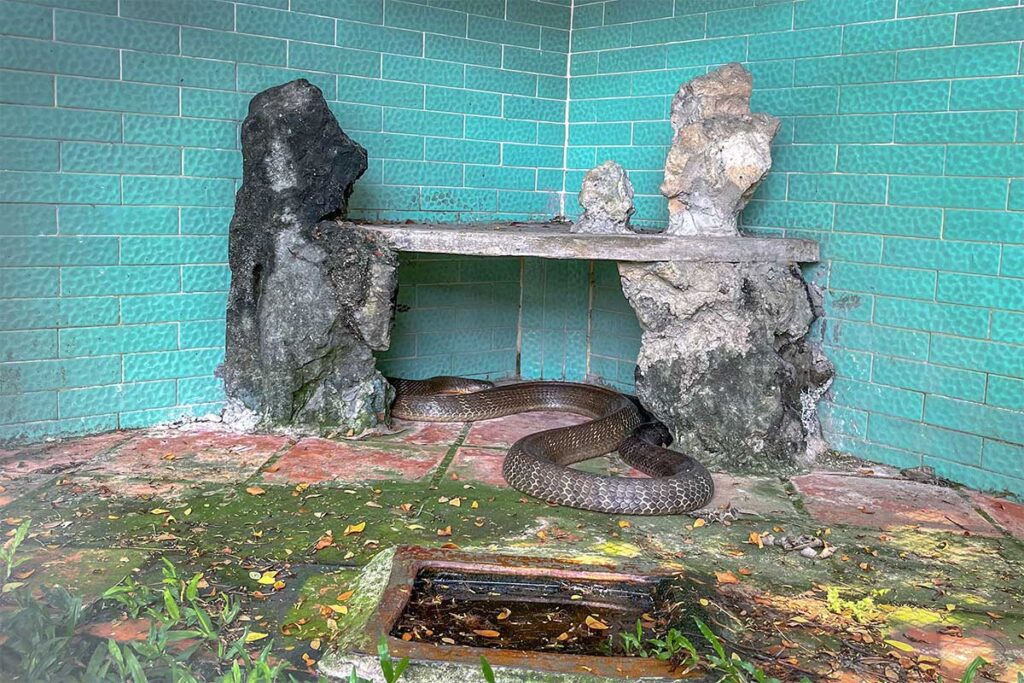
Several pits hold non-venomous species such as rat snakes or water snakes. They are kept in shallow enclosures with low trees or rocks, sometimes resembling a semi-natural setup. Visibility varies, and photography is often difficult because of mesh barriers.
2. Venomous snake cages
Cobras, kraits, vipers, and other venomous species are kept in small locked cages made of wire mesh or concrete cells. Labels are usually basic, often just giving the species name. Signage is limited, so it can be difficult to learn much beyond identifying the animal.
3. Python house / handling photo-ops
Large pythons are kept in individual cages. In some cases, staff offer visitors the chance to pose with one of the snakes draped around their shoulders. This is optional, but worth knowing in advance if you are not comfortable with animal-handling photo opportunities.
4. “Snake museum” (specimens)
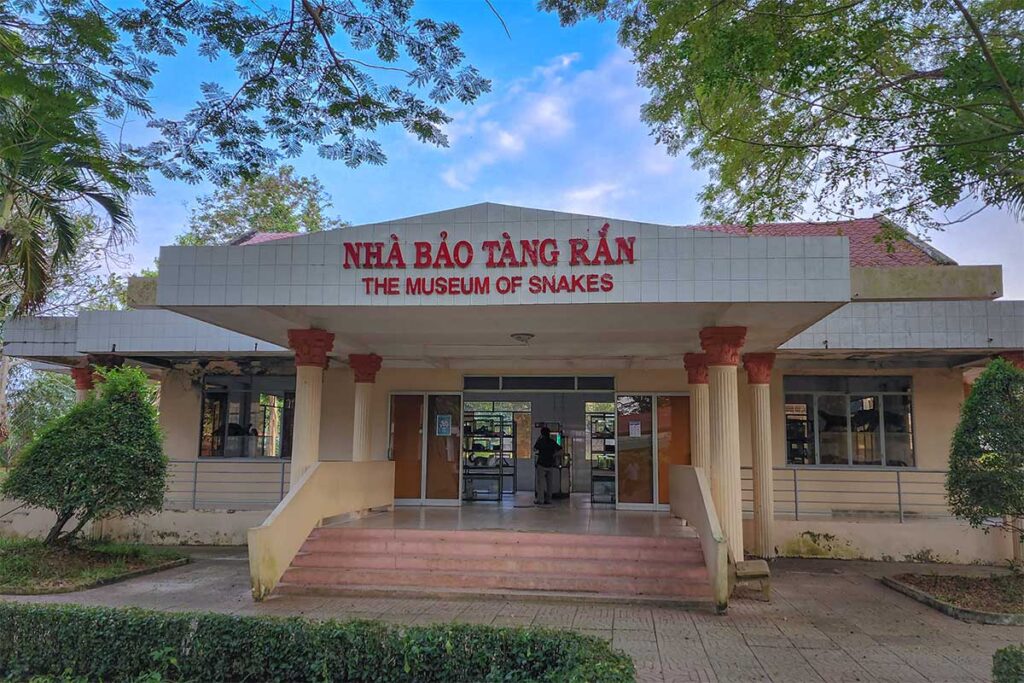
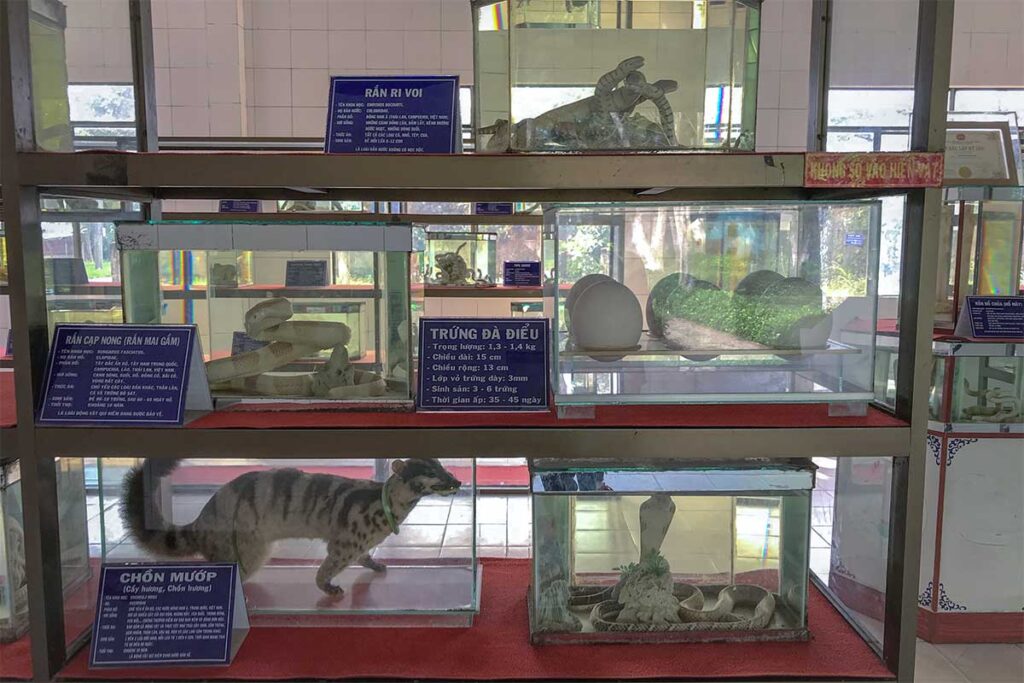
A small indoor section presents preserved specimens of dozens of Vietnamese snake species. While the displays are dated, they are often more informative than the outdoor enclosures, with clearer labeling and a broader overview of Vietnam’s snake diversity.
5. Weekend venom-extraction demo (when scheduled)
On some weekends, staff demonstrate how venom is extracted from cobras or vipers. The session is short and framed as an educational talk, usually with a brief mention of first-aid treatment. These shows do not always run consistently, so timing matters.
6. Other animals (expectations warning)
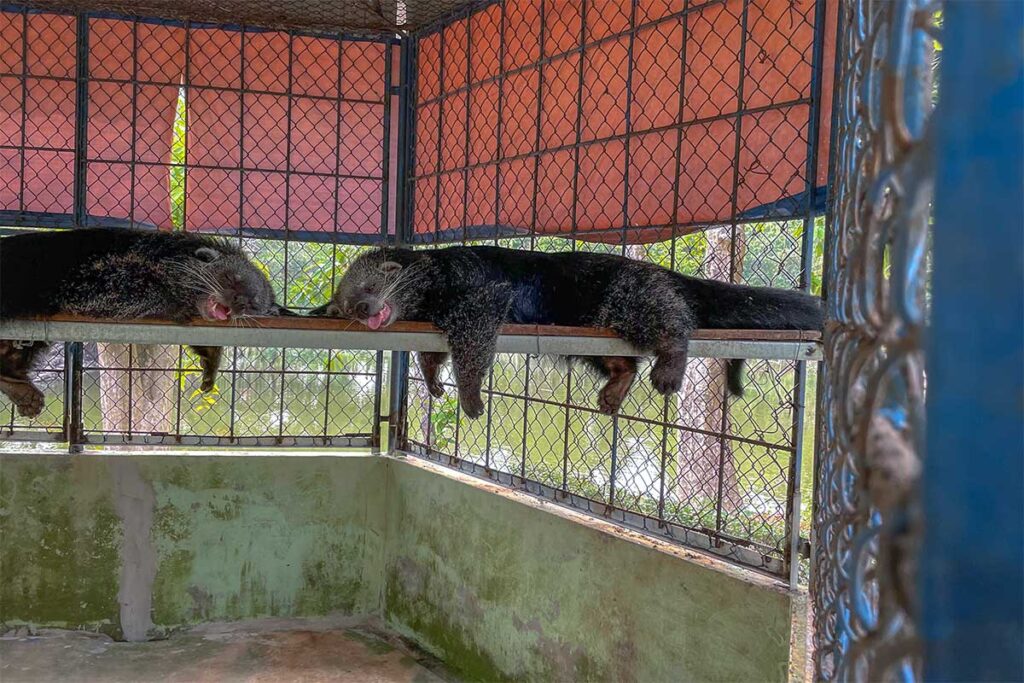
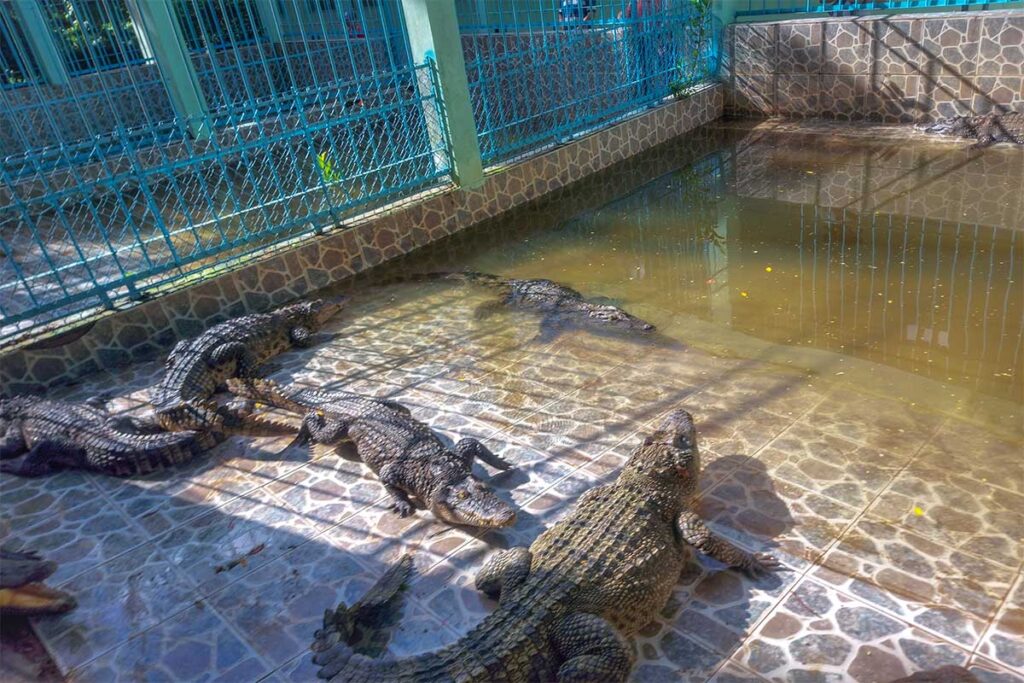
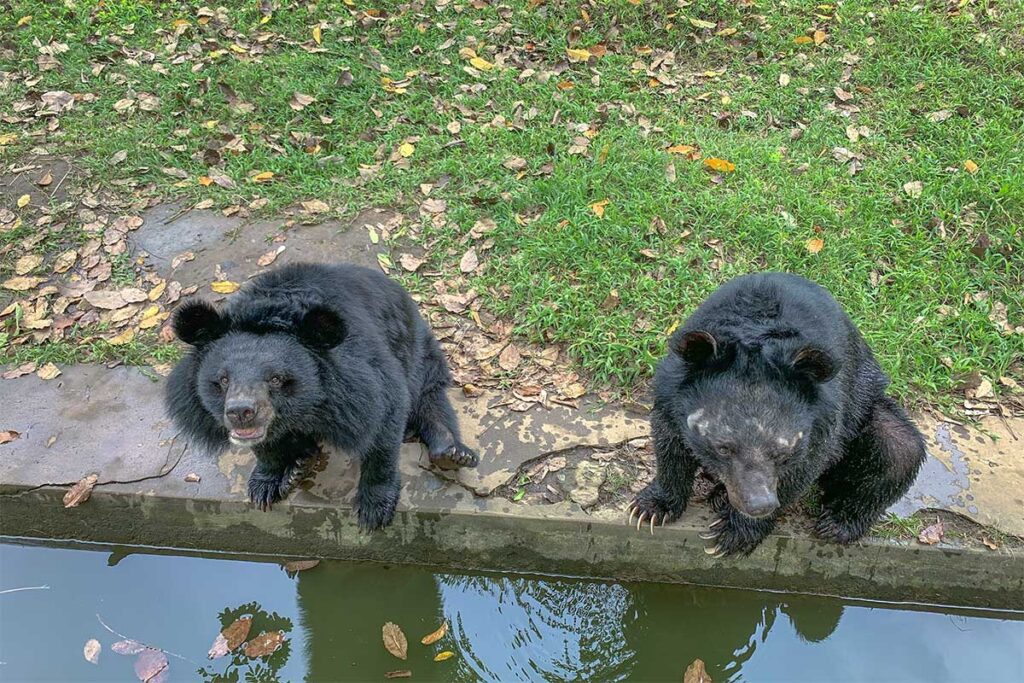
Beyond snakes, you will also find crocodiles, bears, monkeys, birds, and sometimes even big cats. Enclosures are simple and often small, with little enrichment. This is the area that draws the strongest criticism from foreign visitors, as conditions appear outdated and distressing.
7. Shop & extras
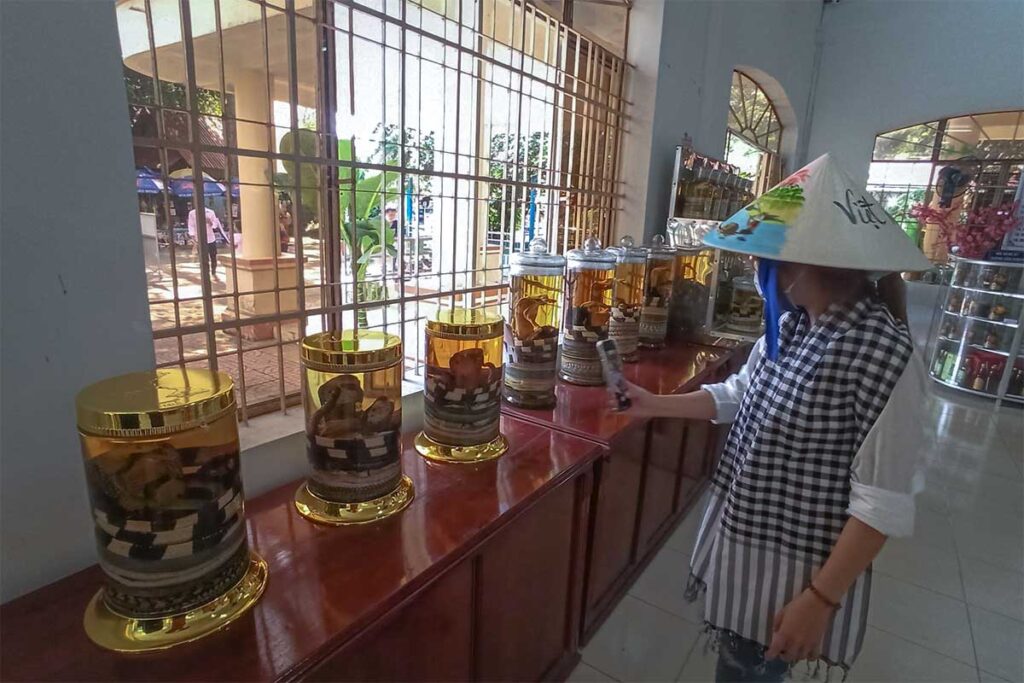
Near the exit, a small shop sells ointments and alcohol made from snake venom, along with snake-skin products, wallets, and belts. There is also a café offering drinks and basic snacks.
Location & How to get there
Where is Dong Tam Snake Farm
Dong Tam Snake Farm is located in Bình Đức Commune, Châu Thành District, Tien Giang Province, about 9–12 km west of My Tho city center depending on the route. The approach is straightforward once you leave the highway, but local signage can be sparse and small detours are sometimes needed due to roadworks.
Getting there
- Day trips from Ho Chi Minh City: A few Mekong Delta day tours (especially those run by local agents) still include the snake farm, though many foreign-focused tours skip it. Travel time from Ho Chi Minh City is about two hours by car.
- Private car with driver: If you want flexibility, hiring a private car with driver is the easiest way to reach My Tho and its surroundings. This also gives you the chance to combine the snake farm (if you choose to visit) with other stops in the area.
- From My Tho: The farm is close enough to reach in 15–20 minutes by taxi, ride-hailing app, or a rented motorbike.
Practical visiting information & tips
Essentials at a glance
- Opening hours: roughly 7:00 – 17:00
- Entrance fee: around 30,000 VND per adult / 20,000 VND per child
- Time on site: most visits last between 45 and 90 minutes.
Safety & etiquette
- Keep a safe distance from cages and pits.
- Follow any staff instructions during handling or demo sessions.
- Avoid tapping the mesh or using flash photography.
- Children should be closely supervised.
- If you’re uncomfortable with animal handling, skip the python photo-ops.
Facilities
There is a small shop selling drinks, snacks, and snake-related products, along with basic restroom facilities and parking space. Don’t expect modern amenities.
Photography reality check
Most snake cages are covered with wire mesh, which makes it difficult to take clear photos. Expect blocked views or mesh patterns showing up in your images.
If you still choose to visit
Set realistic expectations before going: this is not a modern zoo or wildlife center. If you’re there for educational purposes, the preserved specimen museum may offer the clearest insights. For those concerned about animal welfare, consider balancing your visit by supporting reputable wildlife rescue centers or nature-based alternatives elsewhere in Vietnam.
